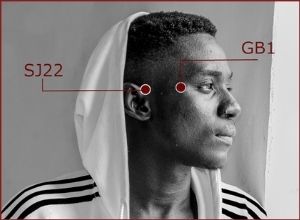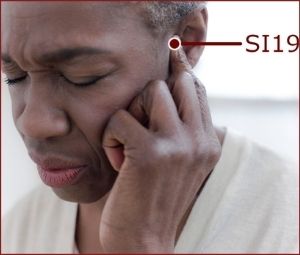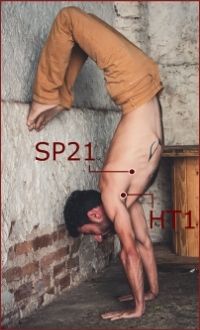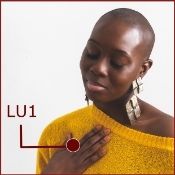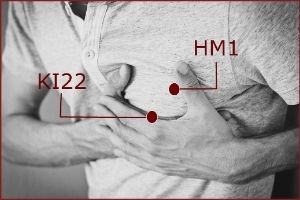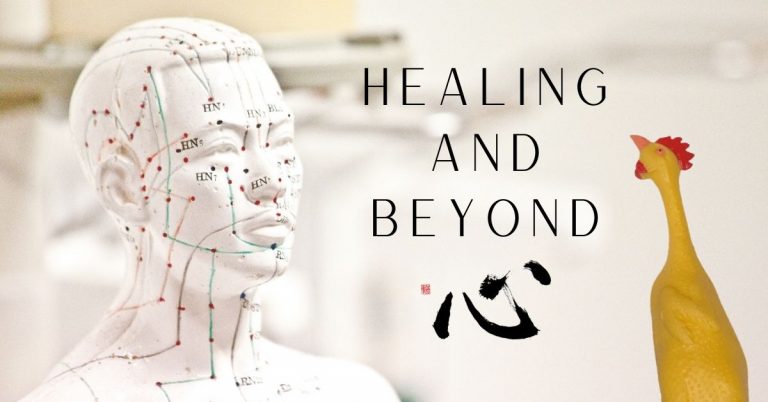Exit-Entry Blocks: Re-opening the Doors of Knowing
Exit-Entry Blocks:
Re-opening the Doors of Knowing
Here’s an acupuncture-related post, but remember, you all have fingers—you can treat yourselves any time!
There is a difference between cognition and knowing. Cognition is a process of working with input in order to get to clarity. With cognition, we go through a process of arriving at knowing, and we can tell that we’ve gone through a process. At other times, we seem to arrive instantly at the knowing. Usually, there was a process; it was just so swift and efficient and transparent that we don’t notice it. Both of these processes—cognition and the seemingly instantaneous knowing—are important for us to look at, and to be able to troubleshoot. We do this by assessing the possibility of blockage in the exit-entry points of the head or the chest.
Exit-entry blocks refer to the phenomenon of blockage or closure as the qi transitions from one meridian to the next, between meridians of different elements. The transition between these different meridians represents a very unusual passage, worth exploring in greater detail. Recognizing and clearing exit-entry blocks can be a profound treatment intervention, opening people’s consciousness beyond pre-existing patterns of perception.
In Chinese medicine, the axis of knowing is called the Heart-Kidney Axis. The Heart is considered to be the place in us where our awareness dwells. It’s a central place where the “I am” sits. Awareness is said to come into the Heart through “the orifices of the Heart.”
There are two different sets of orifices of the Heart: the inner orifices of the Heart, and the outer orifices of the Heart. For Chinese medicine practitioners, these are called the exit/entry points. There are exit/entry points of the head (outer orifices) and exit/entry points of the chest (inner orifices).
Outer Orifices of the Heart: Exit-Entry Points of the Head
We see this at its most obvious in the head, where, between one point and the next, there is a literal gap in our head, known as a sensory orifice. All of the exit and entry points in the head are clustered around sensory orifices. The entering and exiting that’s going on here is absolutely not just from one meridian to another. It’s an opening for communication between inner reality and outer reality. These gaps between the end of one meridian and the beginning of another are places where huge amounts of data, huge amounts of reality, huge amounts of awareness can come pouring in.
Highly influential processes are going on here! On one level, clearing exit/entry blocks is a mechanical wei (superficial) level transfer, but the wei (superficial) level regulates our relationship to the outside world. That’s no small matter! Are the doorways to the outside world open?
Your head is full of holes. Your head is full of significant gaps. Feel the blessed incompleteness of your head! If there were not significant gaps in your head, you would not know what is going on. Blessed are the exits and entries. Blessed are the significant gaps in the head.
The openness of these exit-entry points that cluster around our sensory orifices has everything to do with how our perceptions are filtered. What we see, what we smell, what we hear, also what we taste—all of this is filtered through the sensory orifices.
Imagine what it would be like if, little by little, those exit and entry points started to close down, and there wasn’t as much of a gap. The less of a significant gap there is, the more we’re just living in our own head. We’re walking around in our own mind, thinking our own thoughts, without a whole lot of input from external reality. Ask yourself: Am I open to the input of reality, or am I just going along in a habitual perceptual pattern?
The essential experience of exit-entry blocks in the head is close-mindedness, being stuck in story, and cognition that does not allow perception to penetrate. You’ve got your story. You already know what they mean by what they said. You’ve already seen it. You’ve already thought it. You’ve already smelled it. It’s closed-minded. Time to re-open!
Another usage of exit-entry points in the head is to re-turn the sensory awareness away from the outer world, in towards the Heart.
Inner Orifices of the Heart: Exit-Entry Points of the Chest
Let’s speak next about the inner orifices of the Heart. The inner orifices of the Heart are in the chest, whereby direct knowing about reality comes to us from beyond us. The awareness that we experience inside of us is not really our own. We don’t create it; we just harbor it. It’s a universal light that comes through us. This occurs because, through these openings, the consciousness in our Hearts is connected to all of reality (shen).
Take a moment to stop reading this, close your eyes, cover your ears, and just be with your heart. When nothing is coming in from the outside, there is still awareness inside. What is this inner awareness, and how does it get there? This is what the exit-entry points of the chest are all about.
When the exit and entry blocks are not fully open, how much shen can flow into our Heart? If these doorways are completely closed, we are in a coma; if they are fully open, we have reached Enlightenment. In daily life, when the exit-entry gaps around the heart are more open, what we notice is greater insight. No amount of wide-open sensory perception will generate insight without a corresponding openness in the Heart.
Sometimes, however, those openings of the Heart get clogged up, and that’s called an exit/entry block. Then we have a hard time receiving the direct knowing that comes from beyond us because now our Heart is no longer fully connected to that vast infinite reality.
How do the inner orifices of the Heart that connect us directly to reality get closed? It happens in the presence of strong emotions that we are feeling to the point of overwhelm and shut-down. Every emotion has an Exit or Entry point around the Heart, and when we are experiencing that emotion to the point of overwhelm and shut-down, our Heart closes to our source of direct knowing.
Claude Larre and Elizabeth Rochat de la Vallee say all emotions can be felt in health and clarity if they are felt within the void of the heart. My crude metaphor is: you need a big enough washing machine to do whatever size load of laundry you have to do. This means that if I have this much anger, or this much grief, or this much fear, I’d better have this much more washing machine space in the chest.
Generally speaking, when we are shut down in the exit/entry points of the chest, it’s because we’re having an emotion that feels like it’s too much for us. It’s only too much for us if we’re all crunched up, and don’t have a big enough washing machine for that size load. We then often make the mistake of saying, “I’m overwhelmed” and crunching down more.
Emotions that come and go are healthy, but sometimes an emotion that is both overwhelming and repetitive can occlude a chest entry-exit. This leads to an emotional filter that distorts our sense of reality. Re-opening the exit-entry point associated with that emotion allows us to feel honestly, but not let it block our reception of pure insight.
Summary
The openness of the exit-entry points of the head is essential for allowing external reality to have more of an impact on our process. That’s a really good idea. The exit-entry points of the chest, by contrast, allow internal reality (otherwise known as Source or God or divine light) to have more input into our process. That’s even better.
Sharing What We’ve Got
There is so much to learn about the potential of these points and I feel like I’m learning more every day. I use them on myself with stretches and with my fingers, I use them with needles on my clients. Got any good exit-entry stories? Come tell me about them on my Perennial Medicine discussion listserv (all are welcome).


